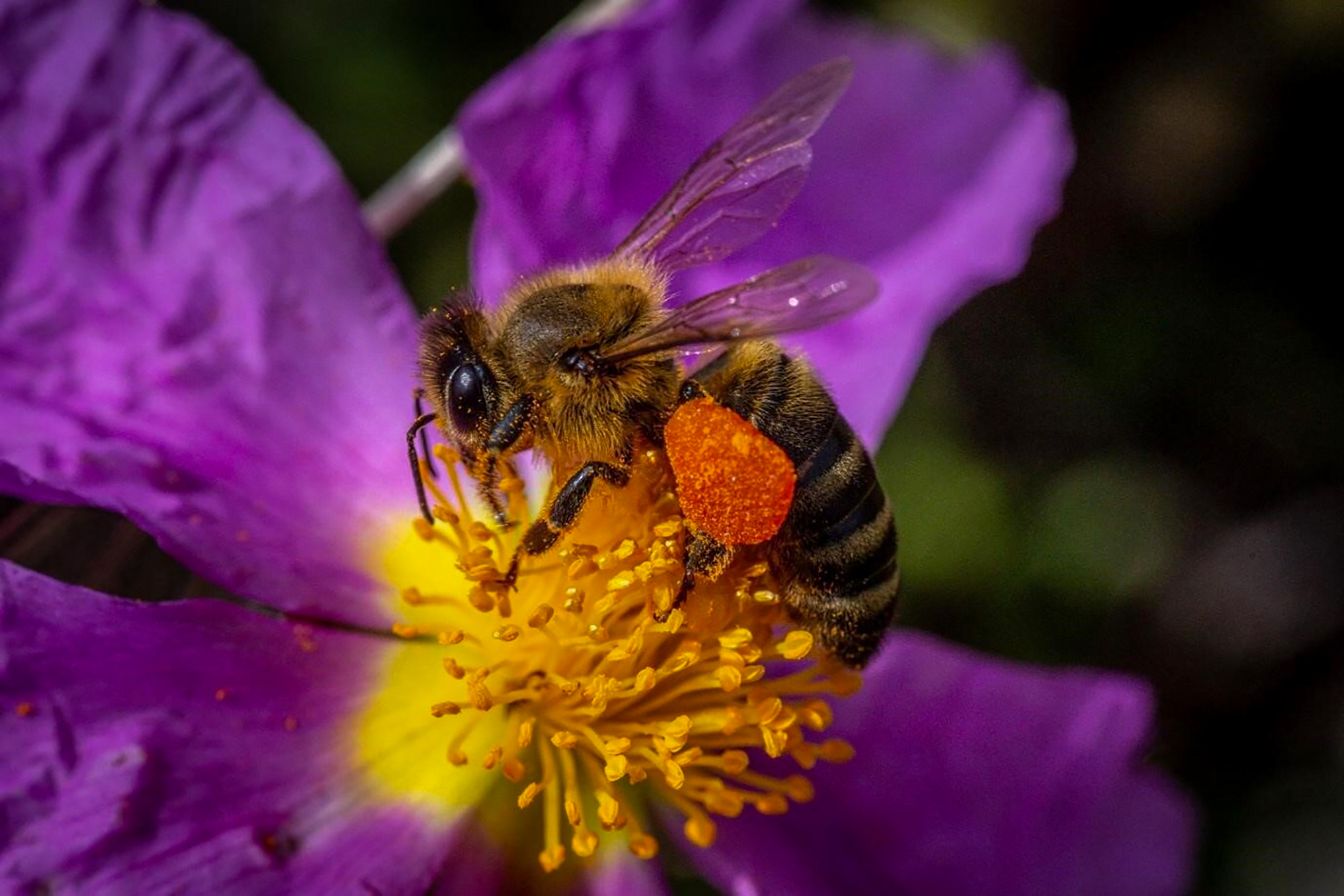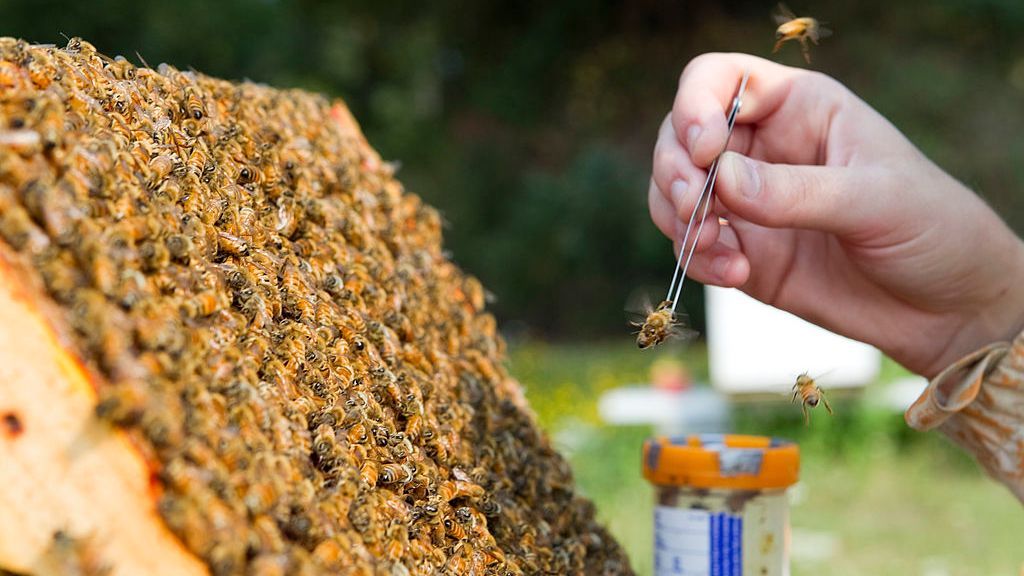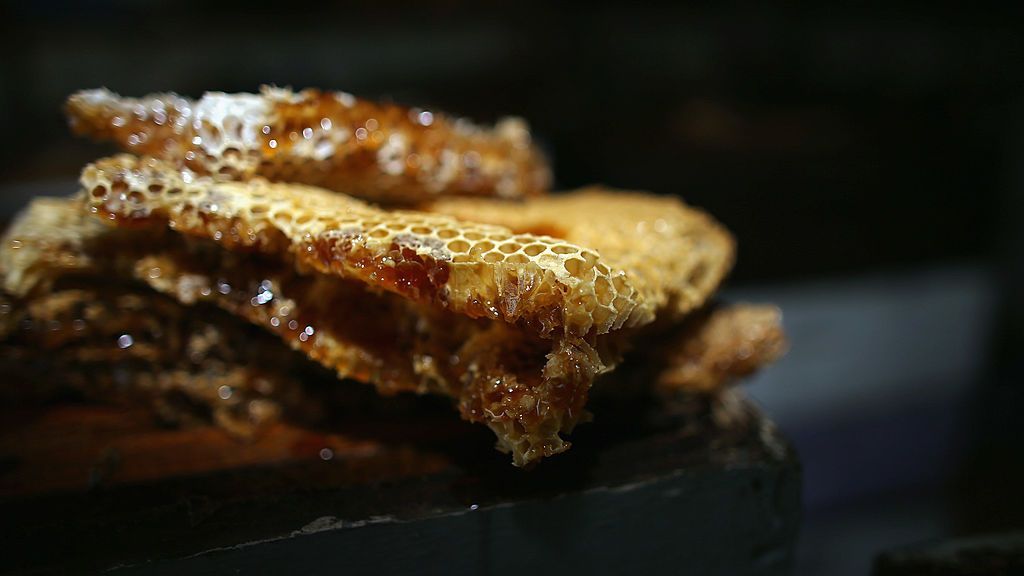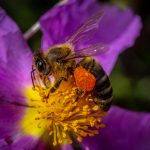
Scientists have developed an innovative method to examine DNA traces in honey that may help with the early identification of health problems in a hive when a deadly new disease variant cuts a swathe through global populations.
The new test will be able to help identify potential diseases like the latest variant of the Deformed Wing Virus threatening bees, as well as mapping their interaction with other species and local botanical diversity.
Researchers at the Biomedical Sciences Research Center (BSRC) Alexander Fleming in Vari, Greece, invented a system called ‘direct-shotgun metagenomics’ which enables them to identify DNA fragments found in honey.
The scientists stress that their innovation avoids sacrificing the insect in the process of finding out more about potentially dangerous viruses and diseases.
Bees produce honey by regurgitating the nectar and pollen from the flowers they forage. Afterwards, they place it in the cells of their hive until enough water evaporates.
During this procedure, honey comes into contact with a variety of organisms. It, therefore, contains DNA from multiple species, also called environmental DNA (eDNA).
This type of DNA originates from foraged plants, gut bacteria of bees and potential hive pathogens such as the varroa mite.
The scientists at the BSRC Alexander Fleming analyzed several samples of honey from an apiary hive in a typical Mediterranean landscape. They identified more than 40 species of plants that reflect all the botanical diversity surrounding the hives.
Study author Anastasios Galanis underlined that a better understanding of bees’ interactions with other species would help in identifying risk periods and zones for bees.
Galanis said: “This is extremely important in rural and agricultural environments where species interactions influence the productivity of crops.”

The scientist pointed out that the production of a lot of our daily food supply depends on the activity of bees and the condition of their environment.
The BSRC researchers were able to monitor the variability of bee diets throughout the year. Their new method also enabled them to determine bees’ microbiota in a non-invasive way. Furthermore, the scientists were able to identify pathogenic species such as the varroa mite.
The Greek study is still at an exploratory stage. However, the BSRC team of scientists thinks that this type of examination could eventually be used to monitor and anticipate diseases and pathogens in large-scale studies.
Study leader Dr. Solenn Patalano said: “Like the human gut microbiome, the gut microbiome of the bee is an important element of their health.
“We already know that environmental stressors, such as pesticides, can seriously damage gut microbial communities and increase the risk of bee diseases. But how this works remains largely unknown.”
Patalano said that their new procedure would allow the study of gut microbiome variation without the need of sacrificing the bees.
She underlined: “If we want to ensure ecosystem services such as fruit and vegetable pollination while maintaining species biodiversity, we also need to safeguard bee health.

“Our challenge is to build biomonitoring strategies in order to identify the fittest ecological niches for all pollinators.”
Honey bees are social flying insects known for their construction of perennial colonial nests from wax, the large size of their colonies, and surplus production and storage of honey.
The varroa mite, excessive usage of insecticides, construction projects, and one-crop agriculture are considered the major threats to the existence of honey bees.
The BSRC study follows a renowned scientist’s warning over a potential global threat to bees.
Professor Robert Paxton of Martin Luther University in the German city of Halle, Lower Saxony, said that the latest variant of the Deformed Wing Virus has the potential to wipe out honey-bee populations all over the world.
Paxton called the virus the “biggest threat to honey bees right now.”
The virus variant is spread by varroa mites. It causes serious damage to the insects’ wings before eventually killing them.
The BSRC Alexander Fleming is a non-profit biomedical research organization.
Founded in 1998, it is named after Scottish microbiologist Sir Alexander Fleming (1881–1955) and his widow, Greek-born physician and human rights activist Amalia Lady Fleming (1912–1986).
Recommended from our partners
The post Sweet Success: Scientists Develop Honey-Based Bee DNA Test To Monitor Hive Health appeared first on Zenger News.











